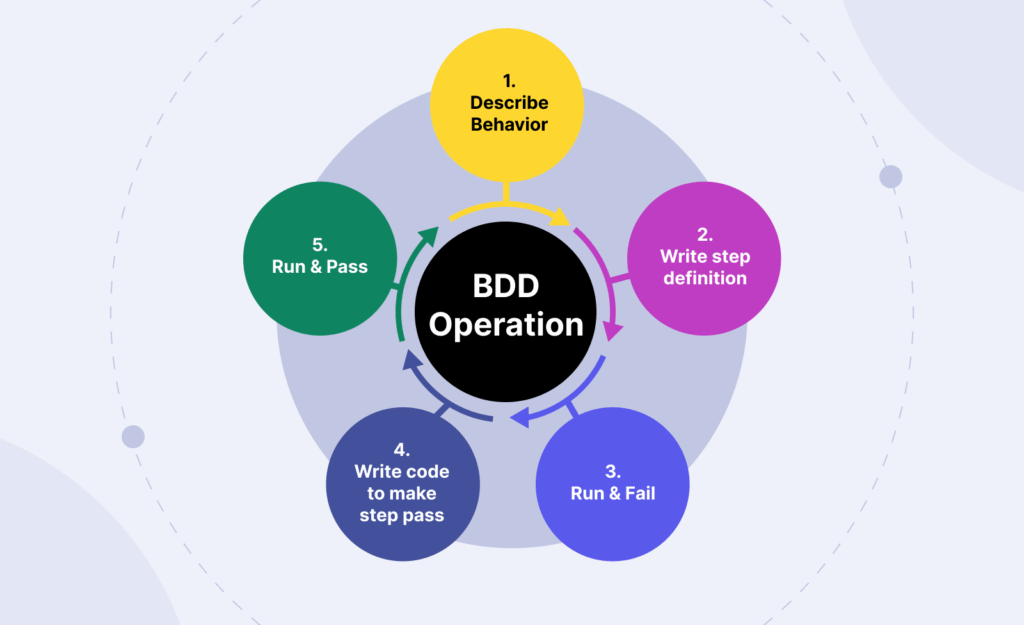What is BDD? Differences between Behavior Driven Development and TDD
BDD (Behavior Driven Development) is an innovative methodology that enables both technical teams and business units to speak the same language by offering a user-oriented approach in software development processes. It is an ideal method for teams that want to improve quality and minimize misunderstandings in development processes. If you are new to the world of software development or looking to optimize your existing processes, understanding what BDD is and how it differs from Test Driven Development (TDD) can make a big difference in your projects.

What is Behavior Driven Development (BDD)?
Behavior Driven Development, or BDD, is a methodology that focuses on creating test cases based on user behavior in software. Dan North introduced this approach in the 2000s to align with Agile processes, uniting business units and technical teams toward a shared goal. Developers design the software to function correctly and meet user expectations.
At the heart of this methodology lies the Gherkin language. Gherkin uses a near-natural language syntax with the “Given-When-Then” structure. For example:
-
Given: The user logs into the system.
-
When: The user clicks the “add to cart” button.
-
Then: The system adds the product to the cart.
This structure helps everyone understand requirements clearly and fosters collaboration.
What are the Basic Principles of BDD?
Behavior Driven Development relies on key principles to make software processes more transparent and user-centric:
-
User Perspective: Developers prioritize how users experience the software over technical details, boosting customer satisfaction.
-
Team Collaboration: Business units and technical teams work together to define requirements.
-
Test Automation: Tools like Cucumber or SpecFlow transform Gherkin scenarios into automated tests.
-
Continuous Feedback: Teams embrace Agile methodologies to enable continuous improvement and feedback loops.
How Does the BDD Implementation Process Work?
Implementing Behavior Driven Development involves a series of clear steps:
-
User Story Writing: The product owner or business unit crafts stories that capture user needs. For example: “As a user, I want to add items to my cart to complete my purchase.”
-
Scenario Creation: Teams translate user stories into Gherkin-format test cases, clearly defining software behavior.
-
Automation Process: Developers use tools like Cucumber or Behave to automate Gherkin scenarios.
-
Code Writing: Developers write code to match test scenarios and run tests.
-
Verification and Refinement: Teams analyze test results and update scenarios as needed.
This cycle ensures the software consistently meets user needs and supports a reliable development process.
What is TDD (Test Driven Development)?
TDD, or Test Driven Development, is a software development approach where developers write tests before coding. Kent Beck popularized TDD to produce clean, low-defect code. The process follows these steps:
-
Developers write a test.
-
They run the test, which fails (since no code exists yet).
-
They write just enough code to pass the test.
-
They run the test again, and if it passes, they write a new test.
TDD emphasizes unit tests and prioritizes the technical accuracy of the code.
Main Differences between BDD and TDD
Both BDD and TDD follow test-driven approaches but adopt distinct philosophies and practices. Here are the key differences between these methodologies:
1. Focus Area
-
BDD: Teams prioritize user behavior and business requirements, answering “What should the software do?”
-
TDD: Developers focus on technical correctness and unit-level code execution, addressing “How should the code work?”
2. Communication and Language
-
BDD: Teams use Gherkin’s near-natural language syntax to bridge communication between business units and technical teams.
-
TDD: Developers rely on technical language, which typically only they understand.
3. Test Coverage
-
BDD: Teams test system-level behaviors, including acceptance and integration tests.
-
TDD: Developers focus on unit tests, examining small code segments.
4. Team Collaboration
-
BDD: Business units, product owners, and developers collaborate closely.
-
TDD: Developers primarily drive the process, with limited business unit involvement.
5. Tools Used
-
BDD: Teams use tools like Cucumber, SpecFlow, or Behave.
-
TDD: Developers prefer unit testing frameworks like JUnit, NUnit, or Pytest.
6. Purpose and Use
-
BDD: Teams aim to minimize misunderstandings and align with customer expectations in user-centered development.
-
TDD: Developers seek to enhance code quality, reduce errors, and simplify refactoring.
Advantages and Disadvantages of BDD
Advantages
-
Teams enhance customer satisfaction by focusing on user needs.
-
Gherkin’s language clarifies and simplifies requirements for all stakeholders.
-
Early test scenarios quickly identify and address bugs.
-
Teams strengthen communication between business units and technical staff.
Disadvantages
-
Writing Gherkin scenarios and setting up automation infrastructure may require significant time.
-
Teams may need training to master BDD tools effectively.
-
Overly detailed or vague scenarios can cause confusion.
Advantages and Disadvantages of TDD
Advantages
-
Developers produce cleaner, more maintainable code.
-
Tests catch bugs early, enabling quick fixes.
-
Testing ensures safe code refactoring.
Disadvantages
-
Developers prioritize technical details over user behavior.
-
Business units rarely participate in the process.
-
Writing tests for complex projects can take considerable time.
When to Choose BDD or TDD?
-
BDD: Choose BDD for projects requiring close collaboration between business units and technical teams or when developing user-focused products. It excels in large-scale projects by clarifying requirements and reducing misunderstandings.
-
TDD: Opt for TDD to prioritize code quality and unit-level testing. It suits projects with heavy technical team involvement or library/component development.
Ultimately, Behavior Driven Development (BDD) unites teams around a shared, user-focused goal. TDD delivers cleaner, more reliable software by emphasizing technical accuracy. Both approaches provide powerful tools to enhance software development, but their focus and use cases differ. Depending on your project’s needs and team structure, you can select BDD, TDD, or even combine them for a more robust process.


